FOWLR tanks are simple marine setups that hold only live rocks and fish. These tanks are easy to build and manage. This article will address its peculiarities, live rock types, tank-building ideas, and a step-by-step FOWLR tank setup. In the end, you will also find a table of suitable fish species for a FOWLR tank.
Content Table
What Is a FOWLR Tank
FOWLR, or Fish Only With Live Rock, is a type of saltwater or marine aquarium. Live rocks in the tank play two roles, i.e., biological filtration and natural aesthetics. These aquariums don’t house reefs and reef organisms. Here are some peculiarities of a FOWLR tank.
Pecualarties of a FOWLR Tank
- They are simple tanks due to minimal objects, i.e., fish and live rocks, and are less expensive to set up.
- They require low maintenance as compared to reef tanks.
- FOWLR tanks are suitable for beginners as they require low maintenance.
- They are suitable for aggressive species, puffer fish, triggerfish, etc., that can cause damage or eat corals and invertebrates.
- You can grow coralline algae on the rocks, as some fish species love to consume it as food.
- Never randomly use medicine in the tank, as it can cause damage to living beings on live rocks. Always research medicine and its effects before feeding it to your fish in a FOWLR tank.
- Mostly, FOWLR tanks are large, i.e., 55 gallons+, because they accommodate large fish species.
- FOWLR tanks are more tolerant of water parameters.
- Filtration is more robust in FOWLR tanks as live rocks do it.
- They don’t require an intense lighting setup. A basic lighting setup is enough for a fish view.
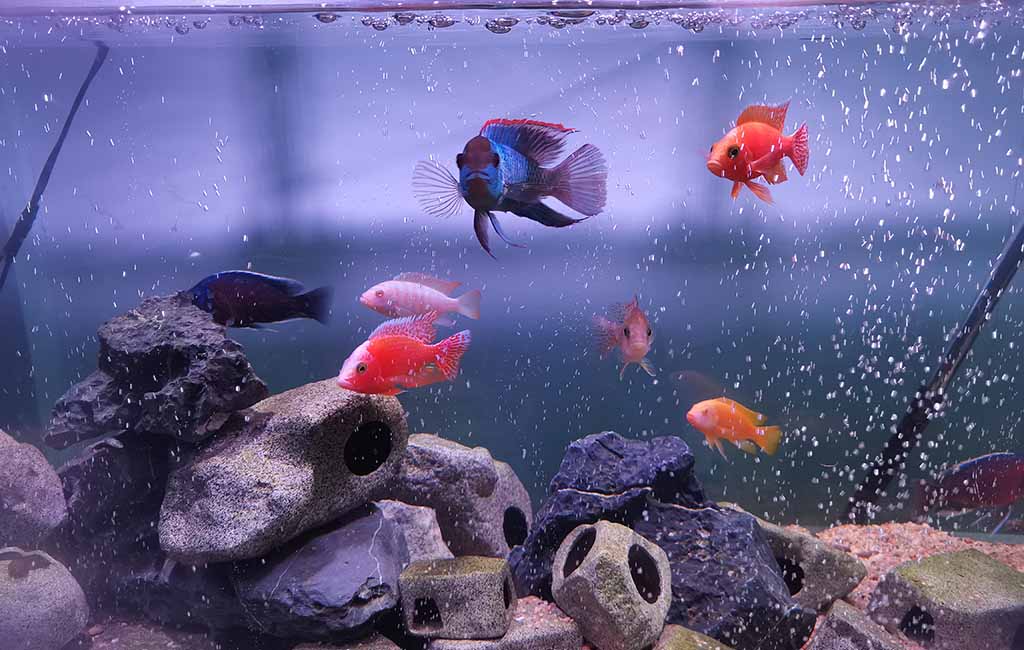
What is a Fowlr tank
Are FOWLR Tanks Easier to Keep
Yes, FOWLR tanks are easier to keep than reef tanks. They are low-maintenance and beginner-friendly. Moreover, they require less equipment.
Types of equipment
- A tank: according to the size and type of the fish.
- Platform: a sturdy and level platform to keep the tank at a height and a level surface. It should bear the tank’s weight.
- Protein Skimmer: It helps to remove the organic waste from the tank.
- Filter: They are large-sized tanks. Therefore, use HOB or canister filters for optimal filtration.
- Powerhead or Wave Maker Pump: It improves oxygenation, maintains optimal water circulation, and helps to maintain uniform water parameters throughout the tank.
- Air Pump: It helps to improve the oxygenation in large tanks.
- Heater: It maintains optimal water temperature for tropical fish species.
- Thermometer: A thermometer helps to monitor the water temperature.
- Live rocks, lights, a water testing kit, and RO water.
- Marine salt mix: It helps to maintain the water salinity.
- Hydrometer: It helps to monitor the salinity level.
- Cleaning brush kit for daily tank maintenance.
How to Upkeep a FOWLR Tank?
It is easier to maintain a FOWLR tank. Here are a few significant tasks that will upkeep your FOWLR tank.
- Do a regular water change, i.e., weekly or bi-weekly.
- Do a routine filter and live rock cleaning. Occasionally do tank cleaning.
- FOWLR tanks have a high margin of error for water parameters. However, regularly check pH, temperature, ammonia, nitrate, nitrite, and salinity levels.
Live Rocks Can Be Used in a FOWLR Tank
You can use several types of live rocks in your FOWLR tank. Here are some types and sub-types, and how you can get them for the FOWLR tank setup.
| Type | Description | Sub-Types | How Can You Get It? |
| Natural Live Rock | They are harvested directly from the ocean and are rich in bacterial colonies. They give a natural aesthetic and enhance biological filtration in the tank. | Branching Rock | Communicate with trusted online or local vendors. |
| Massive or Bouldering Rock | |||
| Encrusting Rock | |||
| Mushroom or ‘Brain’ Rock | |||
| Mushroom or ‘Brain’ Rock | Bace rocks are placed in controlled marine environments or oceans. This method is better than harvesting the natural live rocks from the sea. | Indo-Pacific Cultured Rock | Contact the trusted vendor.
Approach some reef clubs or forums and get it from an experienced aquarist. |
| Caribbean Cultured Rock | |||
| Dry rock | Initially, they are inert and lack marine life. They are seeded with beneficial bacteria. This bacterial seeding turns them into living rocks. | Initially, aragonite-based porous rocks. | Communicate with trusted online or local vendors. |
FOWLR Tank Ideas
Natural Reef Aesthetic
Use live rocks naturally, i.e., organic, uneven clusters, etc. Use them to create caves, overhangs, and crevices in the tank. Fish will use them as hiding spots. Moreover, these live rocks will create an opportunity for exploring fish in the tank.
You can use them to create a sense of depth and layering with these live rocks. Place the large in the background and vice versa in the front. Use sand substrate, as it will provide a firm foundation for them. Moreover, sand will elevate the natural look of the tank.
Minimalistic Design
This design requires a few well-shaped live rocks. Place these rocks at specific intervals. Although these rocks are less than other setups, they effectively help biological filtration. Use intensity-adjustable lights. These lights will help to highlight the rock’s texture. Moreover, due to fewer rocks, there is plenty of open swimming space for the fish.
Tank Design for Predators
Sometimes, you want to mix predators and relatively peaceful species at a large scale. In this case, this design will help. Use rocks in such a way that they create tunnels and caves in the tank. These tunnels and rocks will provide hideouts for relatively peaceful species.
Use well-anchored large rocks to create your design. They will stay at their original position with rapid fish movement. However, maintain a high flow rate in the tank so that water moves throughout, even in the caves.
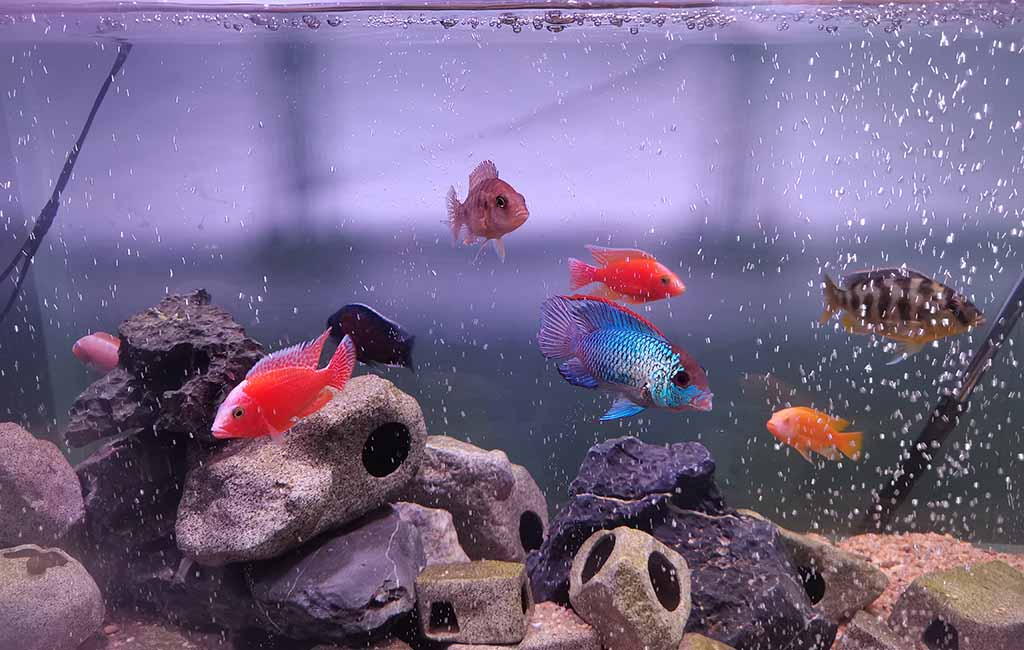
fowlr tank setup
How to Set up a FOWLR Tank?
Here is a step-by-step procedure to build a FOWLR tank.
Decide on Tank Size
Decide on the tank size, whether it is 55 gallons or more. Tank size depends on the fish types and your design. However, a 55-gallon+ is suitable.
Collect the Equipment
- Aquarium
- Aquarium holding platform
- Protein skimmer
- Wavemaker or power head
- Heater
- Thermometer
- Water parameter testing kit
- Basic lights for clarifying the view
- HOB or Canister filter
- Live Rocks
Substrate Layering
Rinse the substrate with RO water before adding it to the tank. Add a 1 to 2-inch deep fine crushed coral layer in the tank.
Live Rock Introduction
Introduce a live rock load of 1 to 1.5 pounds per gallon in the tank. Arrange the rocks according to your design. Try to create caves and swim-throughs. While placing the rocks, ensure rock stability. To achieve stability, you can use reef-safe epoxy. Leave appropriate gaps between tank walls and rocks for proper fish and water circulation.
Fill the Tank
Fill the tank with already prepared saltwater. Gently pour so that there is no disturbance in the tank.
Equipment installation
Install a heater to maintain the water temperature. It is necessary for tropical fish tanks. Install a wavemaker for proper oxygen distribution in the tank. Moreover, a wavemaker helps to avoid dead spots. A protein skimmer is also inevitable.
Tank Cycling
Cycling stabilizes the water parameters. You can achieve it by adding raw shrimp and ammonia. Beneficial bacteria are already on live rocks. Leave it for 4 to 6 weeks. Test the water parameters until nitrate hits less than 50 ppm. Ammonia and nitrate should be zero. If you achieve it, your tank is ready for fish stocking.
Fish Addition
Quarantine fish for 2 to 4 weeks and observe them. It’ll help to avoid diseases in the tank. Use the drip acclimation method to acclimate the fish to the tank parameters. Start adding hardy fish initially, and so on.
Maintenance
Change almost 10 to 20% of the tank’s volume weekly. Regularly test the water parameters. Cleaning the protein skimmer and algae scraping from the glass is also a weekly maintenance task. Clean the filter, check the rest of the equipment, and lightly vacuum the substrate monthly.
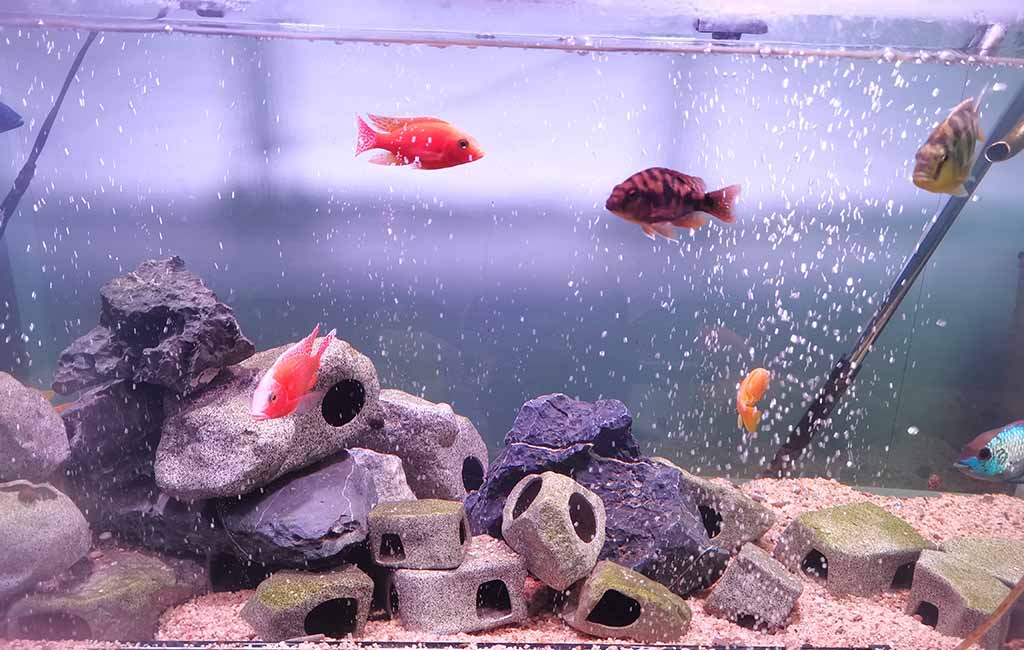
fowlr tank
Best Fish for FOWLR Tank
| Specie | Minimum Tank Size (Gallons) | Temperament | How to Keep Them in a Tank? |
| Ocellaris clownfish | 20+ | Tropical, requires 77–82°F | Live rocks with abundant hiding spots. |
| Keep them single or in bonding. | |||
| Maintain the optimal water parameters. | |||
| Feed them an omnivorous diet. | |||
| Don’t add anemones or use fake anemones in the tank. | |||
| Blue-Green Chromis | 30+ | Peaceful and docile | Keep them in number groups. |
| Maintain good water flow. | |||
| Feed them omnivorous food | |||
| Provide them with a free, open swimming space. | |||
| Firefish (Dartfish) | 20+ | Shy and peaceful | Provide plenty of hiding spots |
| Keep them with peaceful species | |||
| Cover the top with a tight lid. | |||
| Yellow Watchman Goby | 20+ | Peaceful | Provide a 1 to 2-inch deep sandy substrate |
| Add pistol shrimp to them | |||
| Provide burrowing spots | |||
| Cardinalfish | 30+ | Peaceful | Keep them in pairs or small groups
Use dim lights as they don’t like intense lighting Create overhangs and caves with the live rocks, as they love hiding |
| Clownfish | 20+ | Semi-aggressive | Don’t keep shy fish; choose compatible tank mates
Use rocks to create a defined territory, as they are territorial You can keep them as a solo or in pairs |
| Coral Beauty Angelfish | 55+ | Semi-aggressive | Install plenty of live rocks for grazing and hiding
Keep them solo. Multiple fish can cause a fight in the tank. |
| Flame hawkfish | 40+ | Semi-aggressive | Don’t introduce small shrimps into the tank
Add sturdy and stable live rocks that serve for grazing Only keep one in a tank to avoid conflict |
Bringing It All Together
The FOWLR tank is specifically a marine tank containing live rocks and fish. They are beginner-friendly due to their low maintenance and fewer objects. You can use natural, artificially developed natural environments, and artificial live rocks to do your FOWLR tank setup. Natural reef aesthetic, minimalistic design, and predator special are creative FOWLR tank-building ideas. Follow a step-by-step procedure to develop a FOWLR tank and enjoy your FOWLR tank fish species.
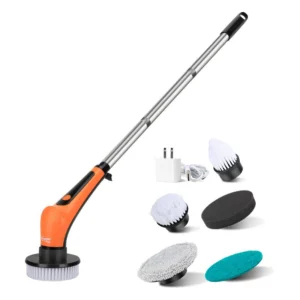
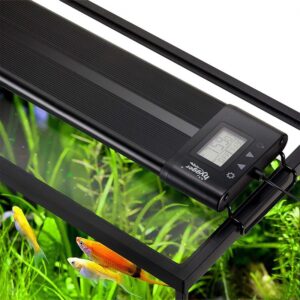
Leave a comment